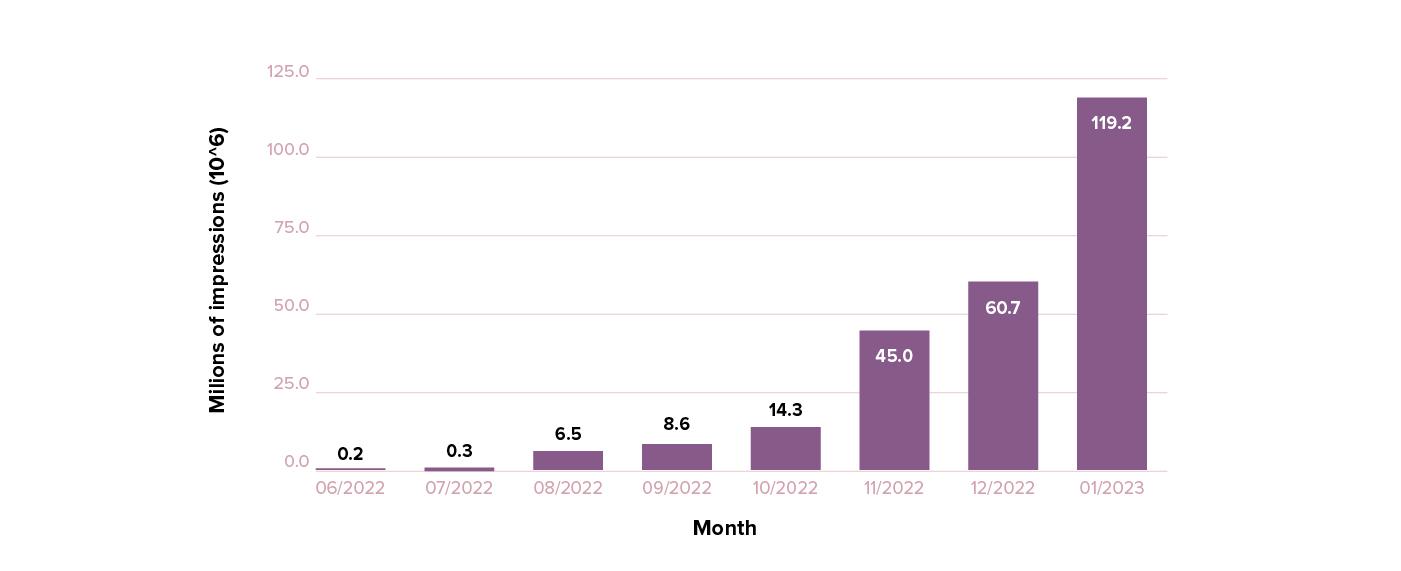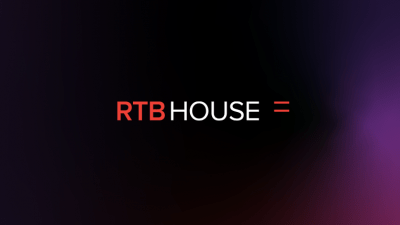Last Updated on: 3rd June 2024, 05:23 pm
As a leading buy-side platform, RTB House has been involved in the development of the Privacy Sandbox ever since its announcement. Being highly experienced in retargeting, we put particular emphasis on FLEDGE. This proposal has been in preparation for years now and has been available for testing in Chrome since April 2022.
We already shared our initial findings from the experiments in a previous article. It covered the availability of the elements for testing, our setups, and the initial results.
In this article, we would like to provide an update on the status of both the market and RTB House as of the end of January, give more insights and results, and share our perspective on the future testing and implementation phases.
Table of Contents:
Market status
Privacy Sandbox testing has been increasing in scale since April 2022. The most recent increase was announced in November 2022 to reach up to 5% page loads for up to 5% of Chrome users. However, since January 2023, the scale has been temporarily lowered to 4% of users for about a month.
This increase in scale has brought questions about the methodology of the FLEDGE performance tests. This matter is even more important due to the fact that Q3 2023 is supposed to be the start of FLEDGE’s “General Availability”, as per the official Google timeline. As described, this stage means that all Chrome users should have this API enabled. The Competition and Markets Authority (CMA) has already started to facilitate discussions about the testing methodology. It has released the initial document calling for market feedback on this matter. The outcomes of this are yet to be released.
Apart from testing updates, there have also been a few changes that should help bring FLEDGE closer to landing. For example, at the end of 2022, Chrome released the Private Aggregation API for testing, which should significantly help in reporting. However, as with other areas, there are also multiple open topics regarding reporting.
Updates from RTB House
We have been actively testing FLEDGE ever since it was released and our approach has been slightly modified since the previous publication.
The overall setup of tests has not changed, and we continue to run experiments mainly through direct integrations with publishers and the FLEDGE-over-RTB experimental workflow, as well as an experiment with Google Ad Manager. More details on these setups can be found in our whitepaper.
Quantitative insights
The scale of testing has significantly increased compared to the last article. This is a result of both the increase of the FLEDGE scale in Chrome to 5% of users and the extension of our partnerships with publishers for testing.
Let’s start with the users added to interest groups in their respective periods. The number of unique users added to interest groups equaled almost 20 million in December compared to less than 1 million in August.

The growth of available users has directly impacted the possibility of presenting them ads. We displayed almost 120 million impressions globally through our FLEDGE auctions in January alone, which is an over 18x increase compared to the number in August.

Despite the significant increase, the scale is still very low compared to traditional cookie-based ad buying. On the other hand, we have significantly increased the coverage of our advertisers for whom we are serving FLEDGE impressions. In January alone, over 46% of our performance advertisers have done so.

Qualitative insights
The tests are moving forward, although the increase would have been bigger had the tests gone as planned. Most of the problems we observe are related to the lack of prioritization by various market participants. This is surprising considering the timeline: FLEDGE is expected to be generally available in Chrome in approximately 6 months, and third-party cookies are supposed to be deprecated in 1.5 years. [Note: In April 2024, the deadline was further postponed until early 2025].
Since our last publication, we have contacted over 80 publishers and publishing networks to set up a test FLEDGE integration. Surprisingly, this time around, the reception was less optimistic. A lot of companies claimed that they are too busy with business-as-usual, or that they are waiting for Google to provide a FLEDGE-based solution in GAM for them to run auctions. Some partners have also suggested waiting for a FLEDGE solution that could work outside of GAM.
The situation isn’t any better on the SSP and ad servers front. Apart from one exception described below, none of the SSPs are actively testing FLEDGE. We have not heard from any SSP regarding potential FLEDGE testing despite the fact that we actually have a working FLEDGE bidder. This is especially surprising given the fact that they signed up to the testers list on the GitHub repository.
Google’s Authorized Buyers (formerly known as Google AdX) is a notable exception among SSPs when it comes to testing FLEDGE. We have been working with the Authorized Buyers’ team for quite some time now, and the cooperation has been very beneficial for both parties. This team has been by far the biggest supporter of our efforts to test the SSP connection in the FLEDGE environment.
The low adoption of FLEDGE among SSPs is a serious and surprising issue, given that multi-SSP connection is technically allowed by the Chrome team both in the specification and its current implementation in Chrome. We considered using Google Ad Manager’s (Google Ad Server) experimental API to directly integrate with the publisher’s ad server to buy FLEDGE inventory. Despite the fact that GAM’s team delivered a technical draft of the solution, along with the demo, in practice it is not freely accessible for third-party companies. The FLEDGE traffic configurator is not exposed in the experimental GAM API as of today. It makes it impossible for publishers and their partnering buyers to run manual and later automated tests on dedicated testing websites without the involvement of GAM’s teams, as the controls of traffic are entirely on GAM’s side.
Testing in 2023
According to the official timeline, 2023 should be filled with tests, not only focusing on the purely technical aspects, but also on the performance of different elements of the Privacy Sandbox. At RTB House, we are all for transparency when it comes to testing, including the standardization of the testing methodology, the publication of the findings, and so forth.
RTB House started as a retargeting company, therefore a large share of its business is still represented by retargeting-based products. Testing FLEDGE became a natural thing to pursue in order to make sure our clients’ needs would be satisfied by this proposal. We welcome the engagement of other players in the FLEDGE tests and encourage them to share their findings publicly.
We mentioned in our previous article that only three buy-side companies were testing FLEDGE. These three, RTB House, Google, and Criteo, are still present and their activity is the most significant. However, since then, we noticed increased interest in testing from other players. In January, we discovered the first interest groups created by Teads. At around the same time, we noticed a bidding function prepared in compliance in FLEDGE from Amazon. There are also more and more players active in FLEDGE discussions and GitHub repositories, but the adoption needs to be faster.
We remain firmly committed to the timeline outlined on the Privacy Sandbox website.
Testing is critical to the success of the Privacy Sandbox, and we’re very encouraged by the increased interest in the FLEDGE testing by the industry. We’re working with SSPs, as well as others across the industry, to increase live testing in the coming months, and are encouraged by those who have shared their testing plans publicly. As we approach the general availability of the Privacy Sandbox APIs on Chrome, we are seeing increasingly high levels of engagement from the sell-side and buyers who see the benefit of future-proofing their solutions to use more privacy-preserving methods of delivering relevant ads. Making programmatic advertising private-by-design is a significant step for consumers, and we appreciate the industry working with the Privacy Sandbox team to build a more private web.
– Hanne Tuomisto-Inch
Head of Privacy & Chrome Partnerships EMEA, Google
Setup of the 2023 FLEDGE tests
Enabling various features for testing is not enough to make sure the tests are successful. The methodology and clearly defined testing goals are just as important. Our plus 10 years of experience in performance retargeting allows us to share our ideas on how to make the FLEDGE tests meaningful and objective.
Firstly, it is a proven fact that, from the performance retargeting standpoint, the population is not homogenous when it comes to the per-user-revenue to the advertiser. With this in mind, it is important to take preventive measures against the potential distortion of the results by rare, high-value users. Therefore, we believe that one of the key aspects of the FLEDGE tests should be scale. As an example, it could be measured by ad spend resulting from FLEDGE campaigns.
Secondly, it is essential to properly define the A/B test samples. In our opinion, the rational approach would require separating the portion of users who will not have third-party cookies, but with FLEDGE API enabled. Any tests conducted only on users with third-party cookies, where the only differentiator would be FLEDGE API availability, would not properly reflect the future reality.
We acknowledge that A/B tests should be iterative and incremental. Similarly to the growing population of FLEDGE-enabled users, the cookie-less population should also grow slowly, in stages. This could help by running performance tests with a safe and small part of the traffic initially, and then validate them at scale. Moreover, the expected timeline of the increases should be available to the public, so that everyone can prepare accordingly.
Lastly, we take into consideration that the outcomes of the tests may influence the timeline of the third-party cookies deprecation. If the tests prove that the required adjustments to the proposal are more extensive than currently expected, we acknowledge that another delay may be announced.
Prerequisites for FLEDGE’s success
Even if Google and a handful of early FLEDGE testers decide to move forward with it, its success highly depends on the broad market adoption. However, this requires a range of prerequisites from both Google and the market participants.
For starters, Google needs to make sure that the market participants feel that the company is committed to implementing FLEDGE. Currently, the Privacy Sandbox timeline is very general, without specific milestones highlighted. Recently, there has been some improvement on this front – Google highlighted when the features easing FLEDGE adoption (such as no requirement for Fenced Frames or the possibility of event-level reporting) will be available. However, the lack of a publicly available, detailed plan for the “General Availability” stage is certainly not helping to accelerate the adoption. This results in a lack of urgency from the market, as highlighted above. Getting into the details of what the important transition stages are going to look like is essential.
This feeling of confidence that the change is coming should increase the engagement in testing from the market. Only broad participance in testing will ensure that the interests of all stakeholders are represented by the new tools. This would also help prevent them from being anti-competitive. Additionally, diverse public feedback can make the iterative testing process much more efficient.
Summing up, everything mentioned above is needed to confirm that FLEDGE is truly a valuable concept to drive retargeting campaigns of the future at a satisfactory performance level. We are looking forward to seeing developments in tests, and we are committed to continuing to share our experiences and feedback publicly.
If you have any questions, comments or issues, or you’re interested in meeting with us, please get in touch.





